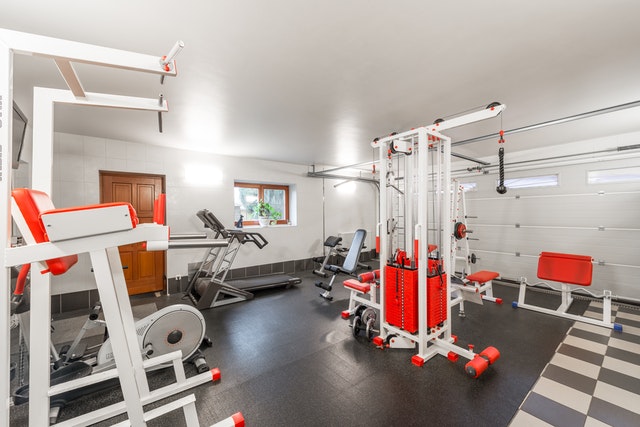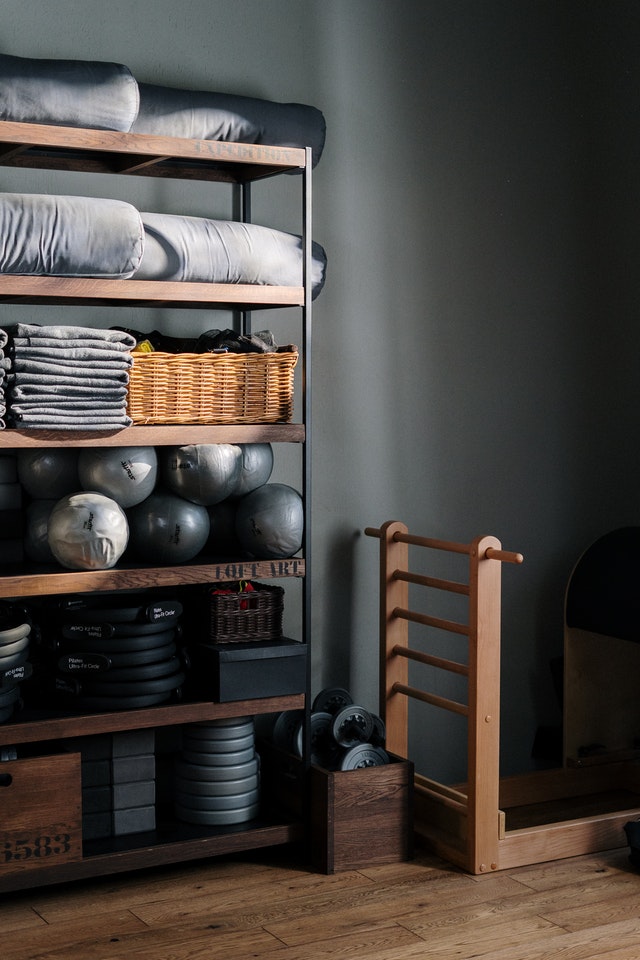First and Foremost, Get Organized
Moving your home can be a daunting task. With so much to do, it’s hard to know where to start. Your home gym is not likely to be the exception. You may need to get creative with gym equipment storage, but you will need to be organized at a minimum. With the tips in this guide, you will be able to tackle your home gym equipment move with confidence.
Set It Up Like If it Was in Use
Collect all your Equipment and set it up to give you a good idea of what will make the journey and what will be left behind. Don’t forget about the flooring and mats. They will still take up space and add to the overall weight of the move. More weight means more fuel.
Clean It Up
Gym equipment can be a hotbed for germs. Most of the myriad bacteria on surfaces and Equipment are considered part of human flora, and only a handful are harmful bacteria. A mixture of warm water and a mild soap is suitable for most exercise equipment. Just be aware that bleach products and acidic vinegar solutions, used on resistance bands, rubber mats, and foam blocks can cause deterioration so warm water and soap can do the job just right. Either way, follow the manufacturer’s care instructions and let the Equipment dry completely before storing.
Declutter
The feeling that the home is unfinished and cluttered has been linked to stressful homes. Prepare to sort and organize your Equipment to give away or sell what you don’t need. Begin by organizing your gear in three piles based on the frequency of use. Include the gadgets and late-night online impulse finds.
The first pile is the Equipment you cannot do without, use most frequently, or brings you joy. The second pile could be Equipment you always meant to use or use less frequently than you thought you would when you purchased it. Eventually, you will take a hard look at what is in that pile and decide if it should be in one or the other piles. The third pile will have the pieces you have never used or that don’t work as advertised and anything that is broken and needs to be replaced. If you have used it fewer times than the number of months you have had it, put it in the get rid of pile. The third pile you can sell, donate or recycle – only trash items you can’t give away because they are damaged or broken.
Decide What You Should and Shouldn’t Disassemble
Disassembling your gym equipment can give you a realistic idea of how much work it will be to move Equipment. A Peloton bike weighs around 135-140 lbs, the Peloton Treadmill weighs about 290lbs, a Bowflex Elliptical weighs around 150lbs, and the Nordictrack rower is 110lbs. Keep this in mind when deciding whether or not to hire professional help for your move.
Alternatives to Moving Gym Equipment

Now that your Equipment is clean, dry, and organized, you can decide what you will take with you, what you need to store, what you can sell, and what to donate.
Is It Worth The Effort — Selling and Buying New Stuff
Look at what you have in your get rid of pile. Do you think you can sell any of it and apply the money you make to purchasing new equipment at your new location? Do you have the time or energy to sell it? Free, online marketplaces and social media can be a fast and straightforward way to get Equipment out of your garage and money in your pocket. However, it can also mean spending your time answering questions about whether or not it is still available, negotiating prices, and setting up delivery. A second option is to find a second-hand store, pawnshop, or sports consignment store that will sell it for you for a small fee.
Is It Worth The Effort — Renting Equipment for your next home gym
One more option is renting gym equipment, which can be a great option if you go to a short-term home. Look online for companies that rent exercise equipment near your following location. They will deliver and set up, though confirm the cost of this service before you get started. A treadmill can cost $350 per month to rent for a minimum of 2 months. If the delivery and set-up fee is $200, you will spend $900 in two months. If you are only going to be there for two months, that could be a more affordable option than purchasing new.
Organize Big vs. Small
Your next logical step is to prepare for packing. Organize your Equipment into groupings to get a sense of what you will need for packing. You can assume the following items:
- Boxes – for putting similar items together
- Packing tape – to secure the boxes
- Painters tape or masking tape for labeling
- Packing paper – to keep things from shifting during transport
- Zap straps – to keep cords and like items securely together
- Sandwich bags for keeping parts like nuts and bolts together
Small items should be in one pile and large items in another. Like items can go together — light things like foam blocks and gym towels in one box, heavy things like free weights together in another container.
DIY vs. Hiring Pros to Package
Whenever you decide between hiring a professional and doing it yourself, you can make a list of your costs and compare them to the cost of having a professional do it. Don’t forget to factor in your time. If you were working at your job instead of packing, how much money would you be making? Is there something else you need to do with your time? It is also a good idea to contact your insurance carrier to confirm any loss or damage that occurs during the move will be covered or if you need additional coverage for doing it yourself versus hiring a professional moving company.
How To Prep To Move Expensive Equipment
You’ve got an idea of what can be disassembled, and now it’s time to prepare your Peloton Bikes, treadmills, stationary bikes, and gym sets. Work one by one so as not to mix parts and pieces up. When you remove bolts, screws, and similar hardware, keep them together in a sandwich bag. Label the bag with painter’s tape and attach the bag with tape to the Equipment it belongs to. Use painter’s tape because it will be less likely to leave a residue when removed.
Secure any loose parts like cords that cannot be removed with zap straps and wrap plastic wrap around digital displays and computer components to prevent water damage from rain. The superficial exterior parts receive the brunt of the general abuse during a move. You can protect them by affixing cardboard around the corners, secured with plastic wrap. When it comes time to load them into the trucks, you can use blankets to protect them from damage during the move.
How To Organize And Arrange Expensive Equipment
Peloton Bikes, treadmills, stationary bikes, and gym sets may seem built tough but can be easily damaged during a move. When packing a trailer, the heaviest items will go in first to decrease sway during the drive. Avoid the temptation to pile other Equipment on top to maximize space. If you must put things on top of your Equipment, make sure they are light items like pillows and bedding.
Storing It If You’re Making A Short-Term Move

Depending on your reasons for moving or the length of time you are moving, you may want to store your Equipment until your new, long-term space is ready. Storage companies can give you a quote for packing, shipping, and keeping your items for the long or short term. They will need to know things like how many stairs there are or if there is an elevator, plus the general size and weight of the items. Have these answers ready when you contact them for your best deal and storage unit availability.
Setting Up Your New Home Gym

Now we get to the good part – setting up your home gym in your new home. Plan out where your items will go before you unload the truck, so you don’t have to move it around more than once. Design your new space with inspiration and motivation, but don’t forget about air ventilation and light. When you do unload, start with your flooring.
Moving can be fun if you are prepared and have the time. It allows you to reimagine how to arrange your belongings. A key aspect of keeping the move fun and effortless is planning. With the tips in this guide, you will be ready to go on moving day; all you have left to do is grab the drinks, order dinner, and consider local full service moving companies.




